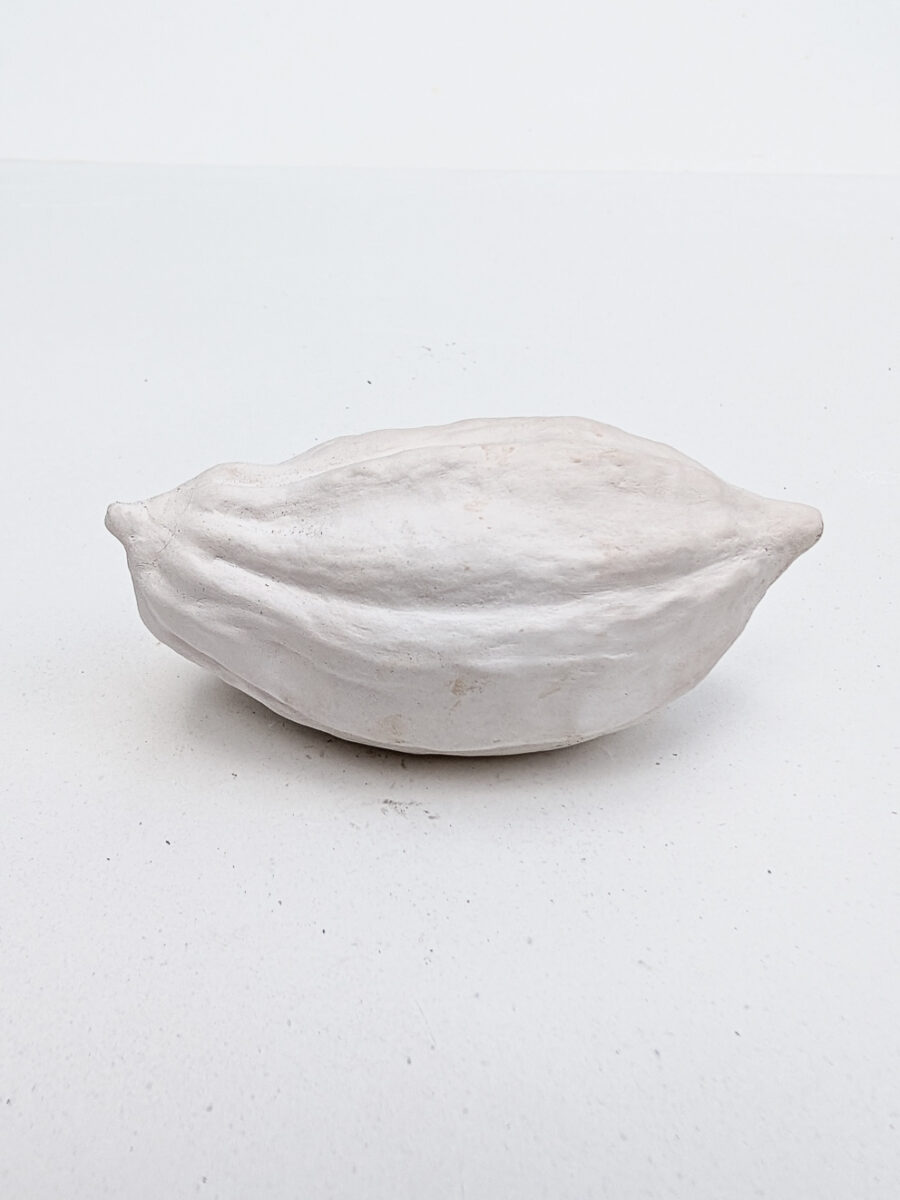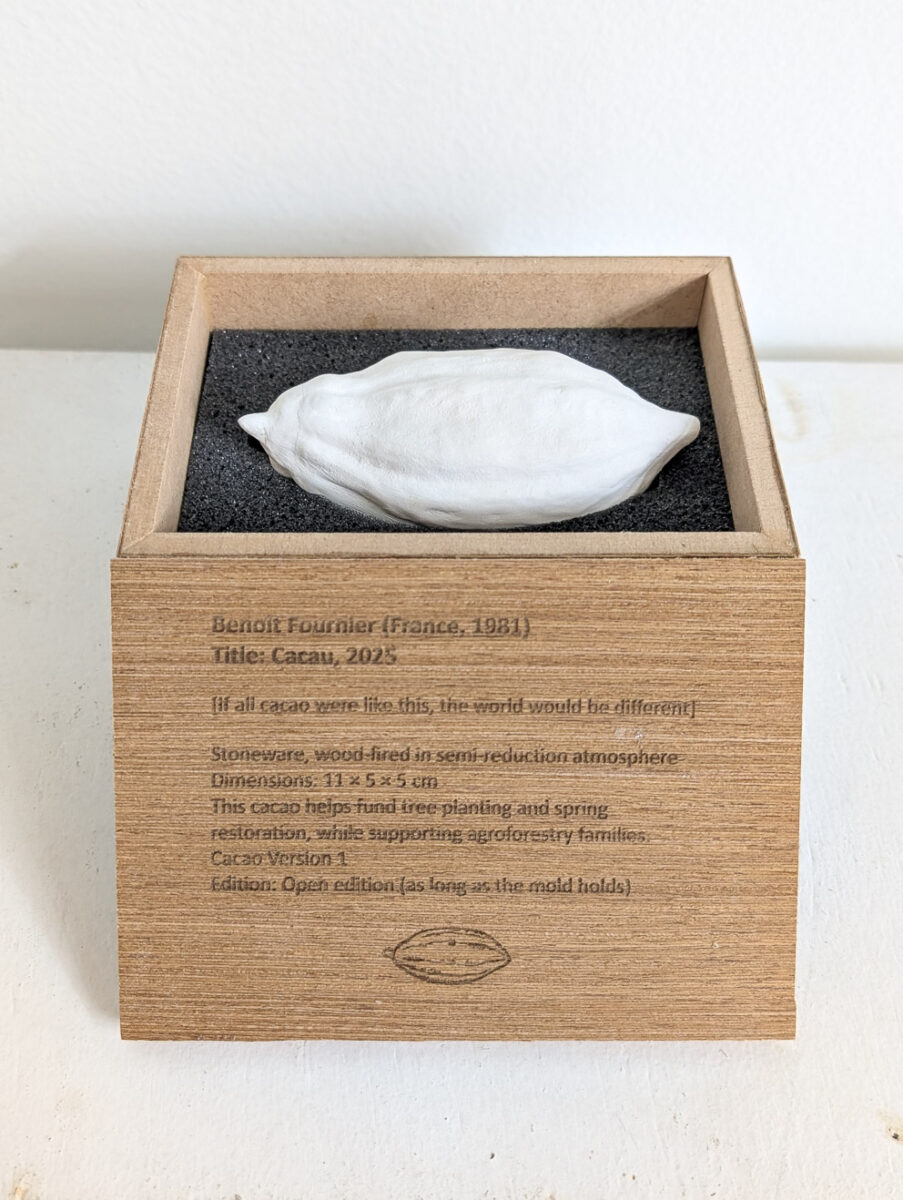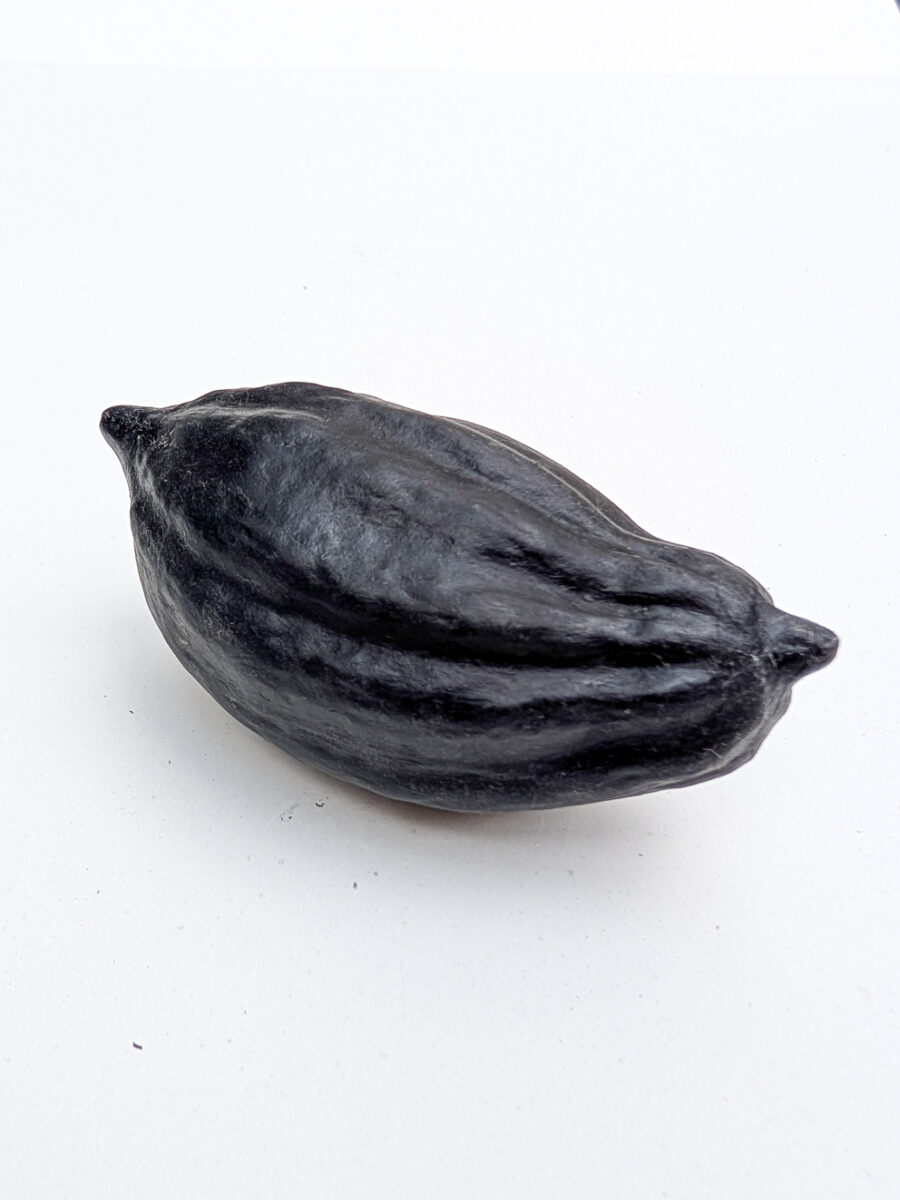If all cacao were like this, the world would be different
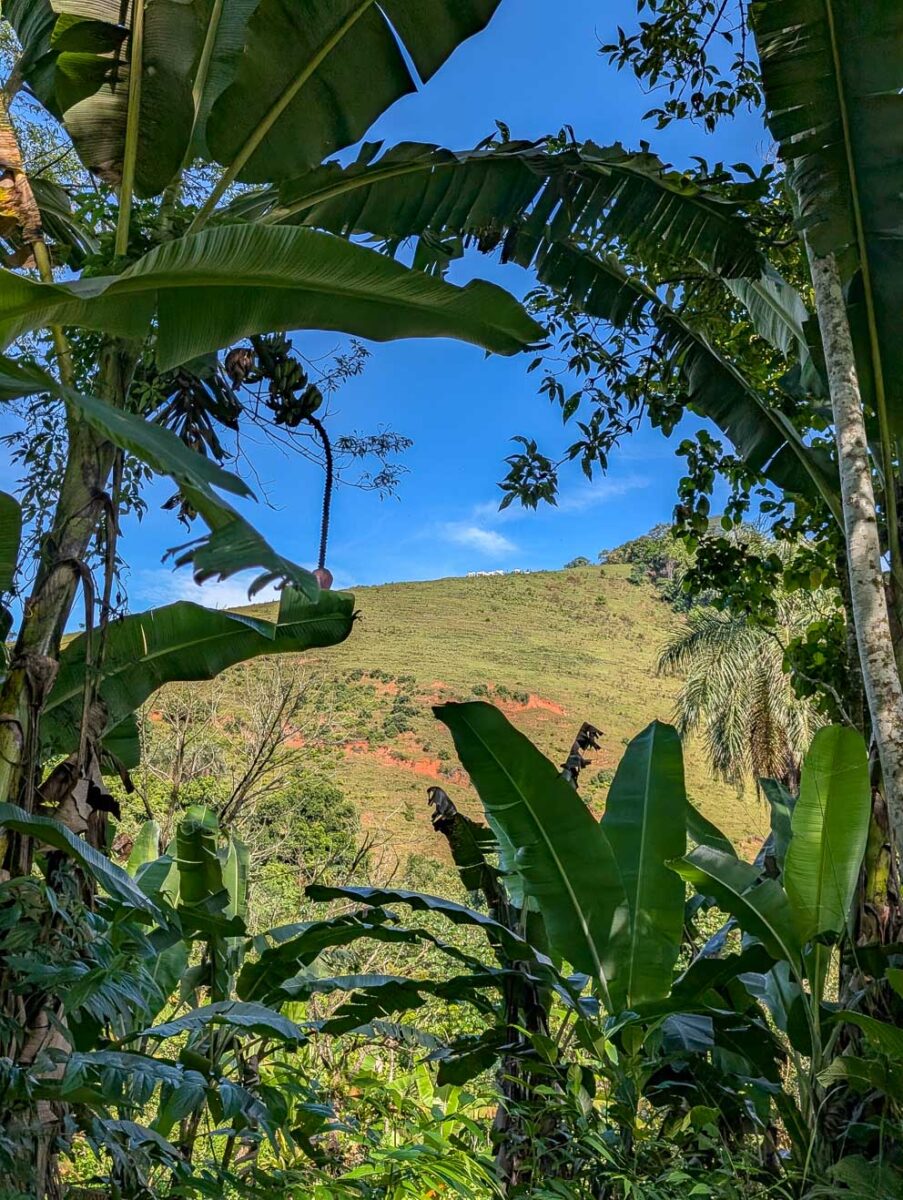
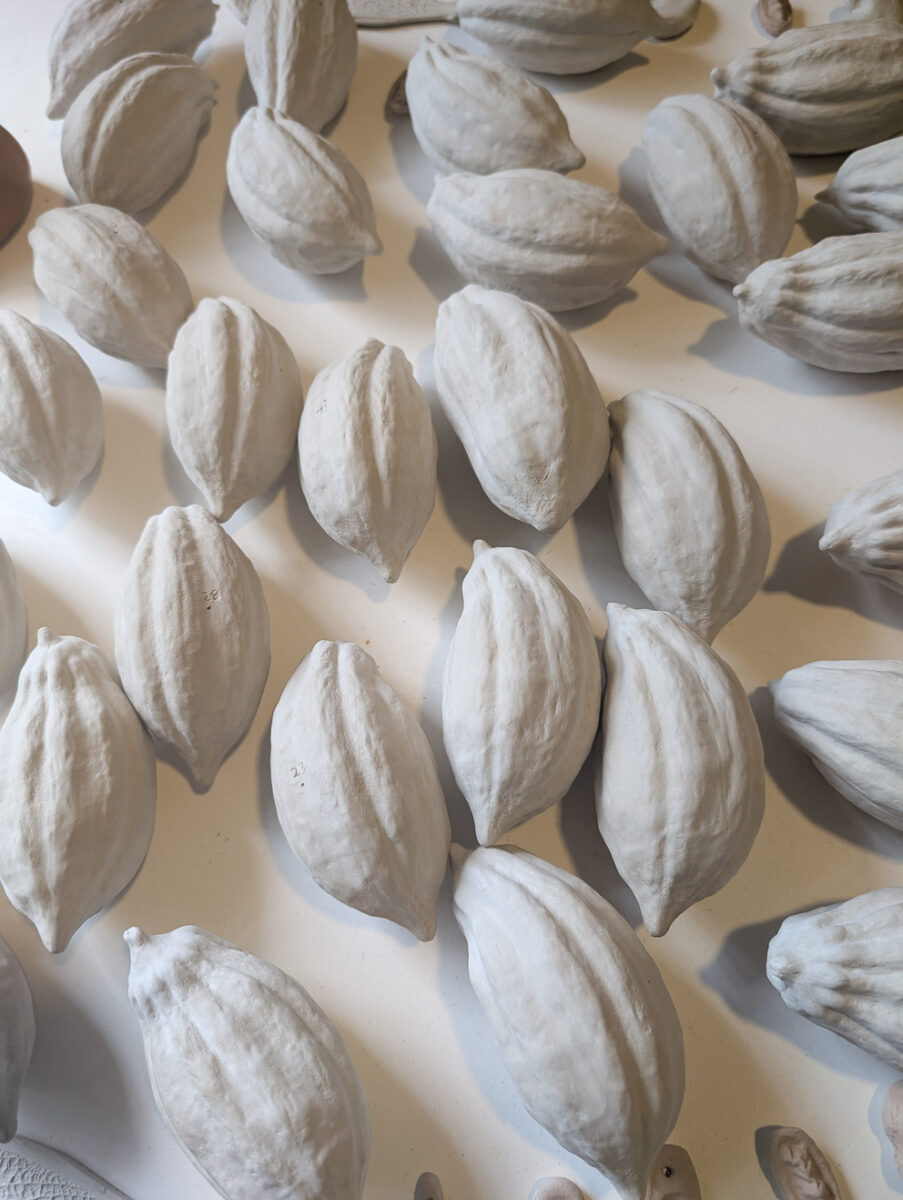
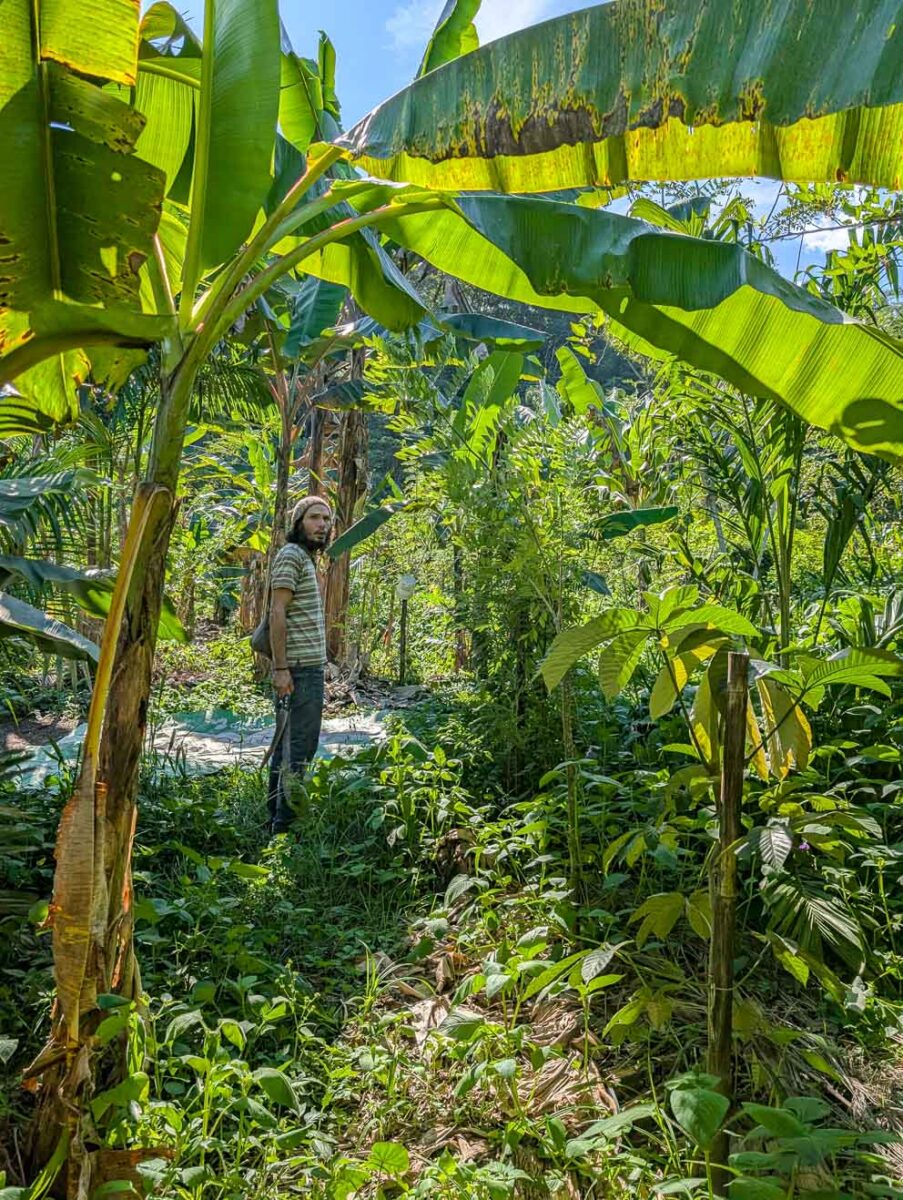
Le projet
Ce travail naît de ma relation de plus de cinq ans avec de petits agriculteurs et agroforestiers de Guapimirim (près de Rio de Janeiro), chez qui j’achète des fruits et légumes tels que l’açaï, le palmier, le manioc et le cacao.
Ils cultivent tout sans produits chimiques, en respectant les savoirs ancestraux de la forêt et en prenant soin de la terre — et, par conséquent, de notre santé. Chaque fruit porte en lui des histoires, des mémoires et des modes de vie qui valorisent la diversité et le cycle de la vie.
L’œuvre Cacao naît de cette rencontre : transformer formes, textures et couleurs en sculptures qui sont aussi des gestes concrets de régénération. La vente de chaque pièce finance la plantation d’arbres dans des zones de sources, soutenant les familles locales et régénérant l’eau, le sol et la vie.
Un seul moule, reproduit de nombreuses fois, devient métaphore : montrer que la diversité est précieuse, tandis que la monoculture épuise la terre. Ainsi, chaque sculpture est à la fois un symbole poétique et une action transformatrice.
Le processus créatif
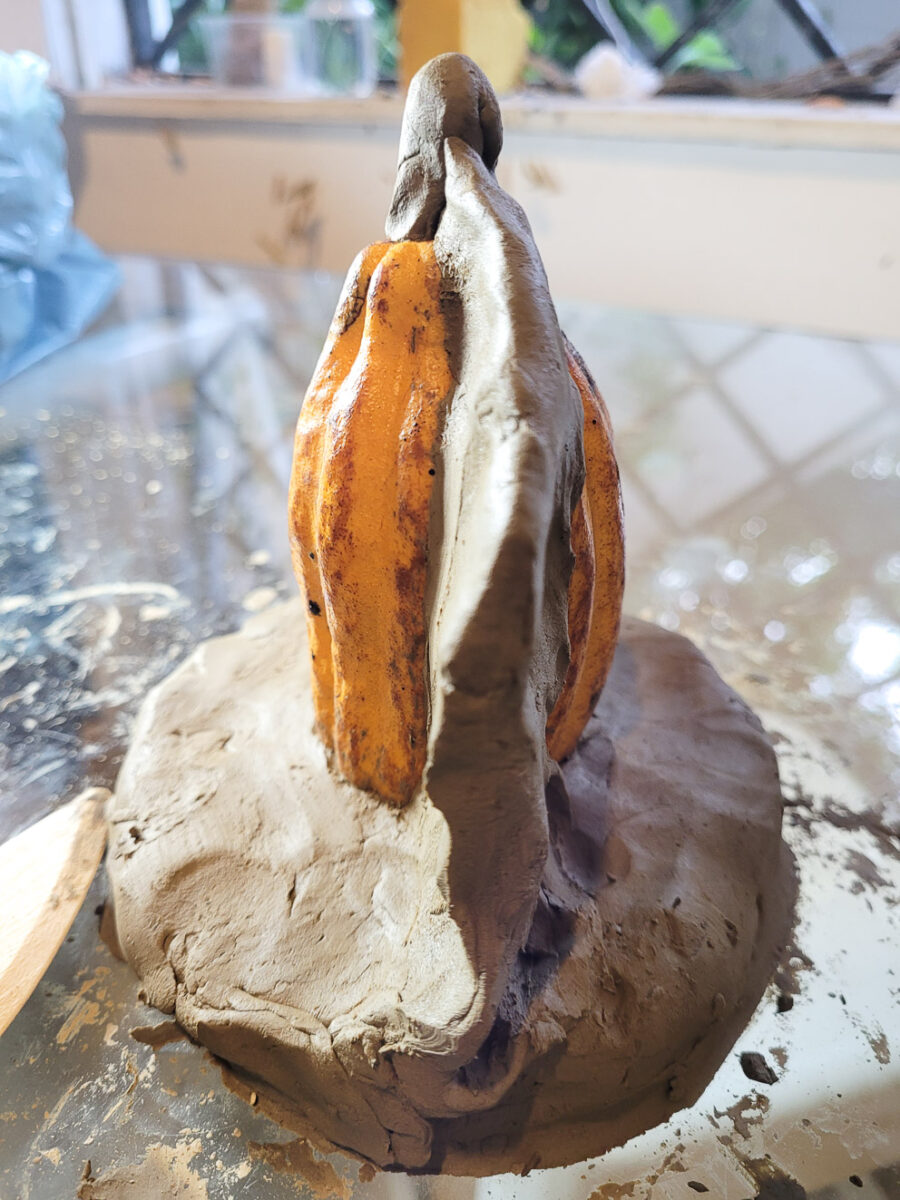
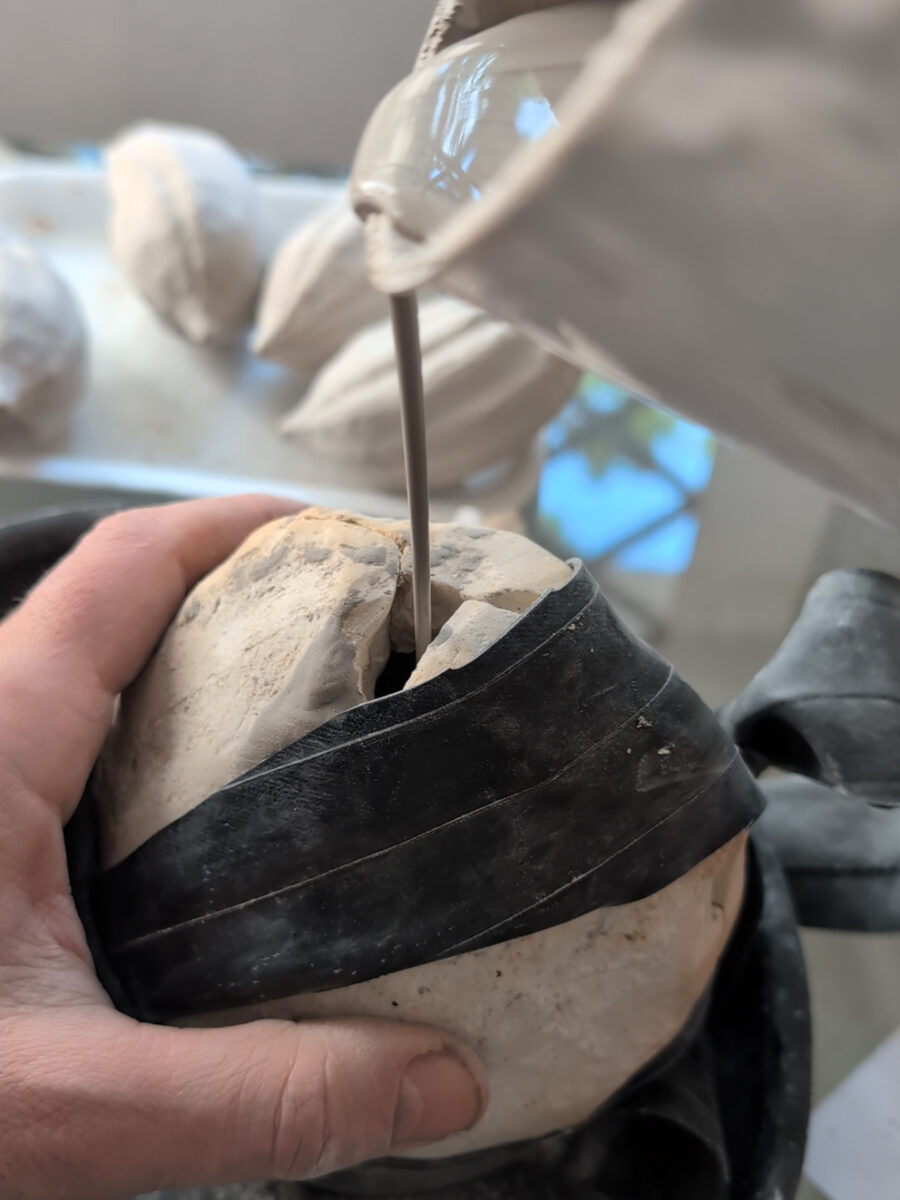
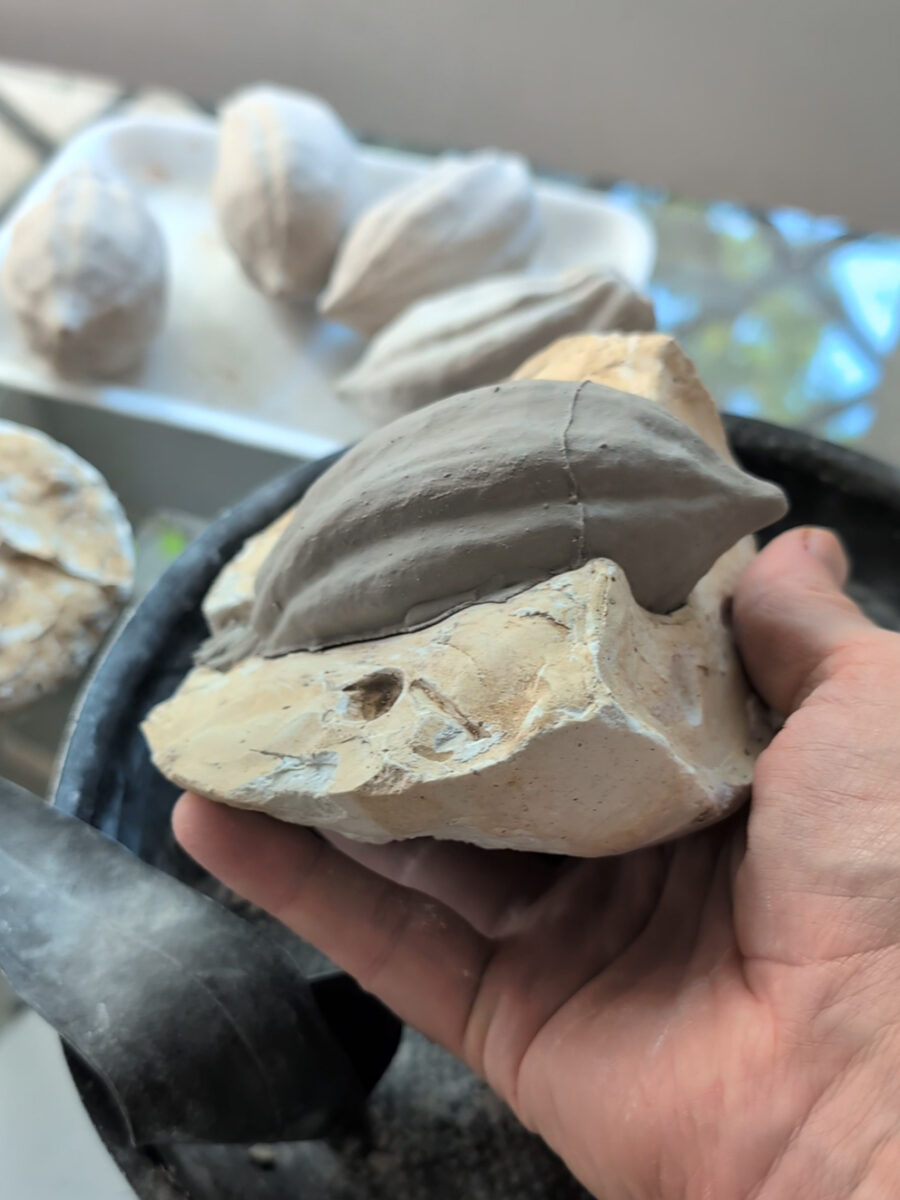
Tout a commencé lorsque mon ami Edimo, agroforestier, a récolté un cacao sur sa parcelle. À partir de ce fruit, j’ai réalisé un moule en plâtre. Ensuite, j’ai utilisé de la barbotine de grès pour le remplir (en coulant).
Les pièces ont été cuites dans un four à bois, en tir direct, un processus naturel qui fait revivre des techniques anciennes. Certaines sculptures ont été cuites avec réduction d’oxygène, créant des nuances uniques à la surface.
Ce cheminement manuel, presque rituel, traduit non seulement la force du cacao, mais aussi la mémoire des processus ancestraux de transformation de l’argile en symbole.
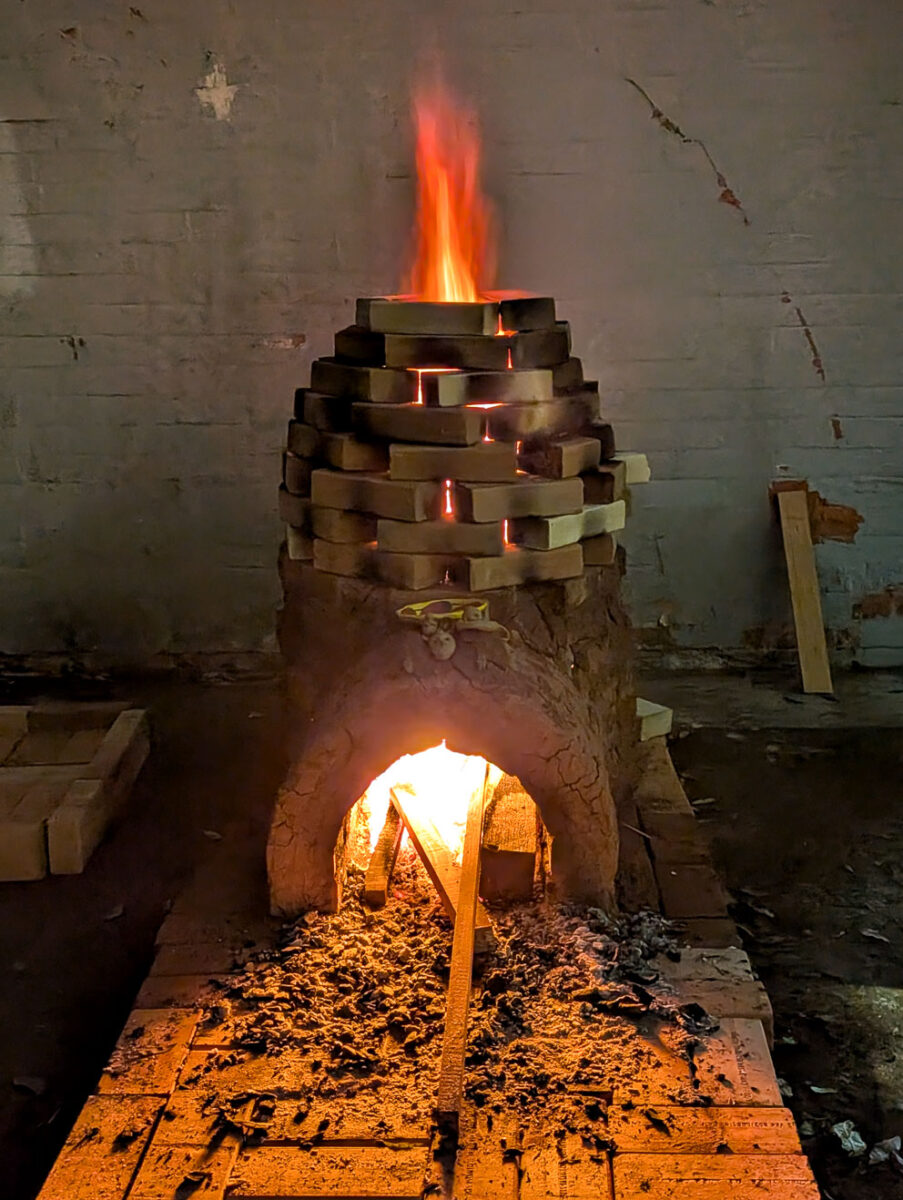
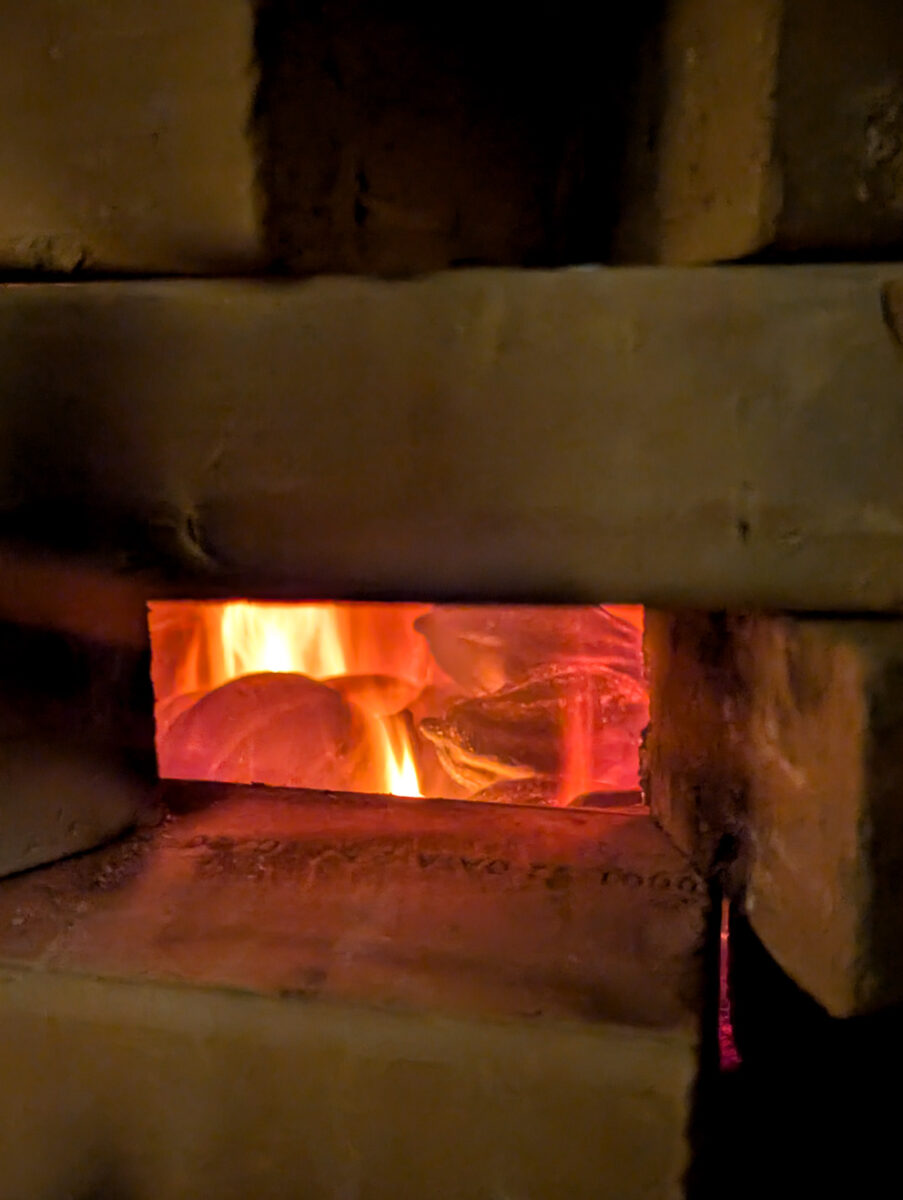
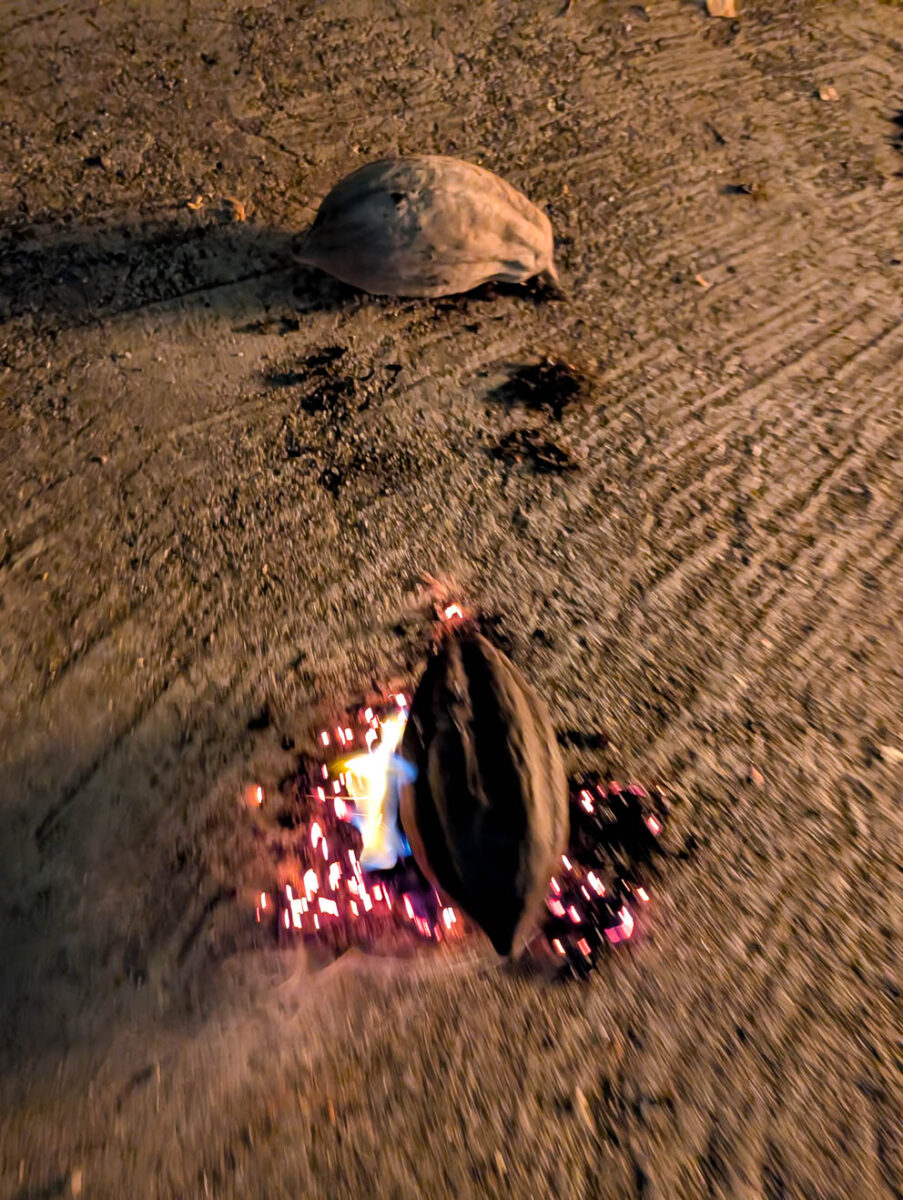
L’oeuvre finalisée
Chaque sculpture de cacao en grès est une invitation à la régénération : symbole de nourriture, de diversité, de revenu et de forêt vivante. Pour protéger et valoriser chaque pièce, Instaart a conçu une boîte en bois personnalisée, avec gravure au laser et mousse intérieure — fruit d’un partenariat qui unit art, design et soin.
Chaque œuvre est numérotée, signée et accompagnée d’un certificat attestant de votre participation à la reforestation : en acquérant une pièce, vous devenez Partenaire de la Source, soutenant directement la plantation de jeunes arbres, la restauration de l’eau et le renforcement des familles agroforestières — une œuvre d’art vivante qui plante des idées et des arbres, une invitation à prendre soin de la terre, de l’eau et des personnes, et un investissement dans l’art avec un véritable impact écologique et social.
Titre : Cacau, 2025
[Si tous les cacaos étaient comme ça, le monde serait autre]
Technique : Grès, cuisson au bois
Dimensions : 11 × 5 × 5 cm
Édition : 30
